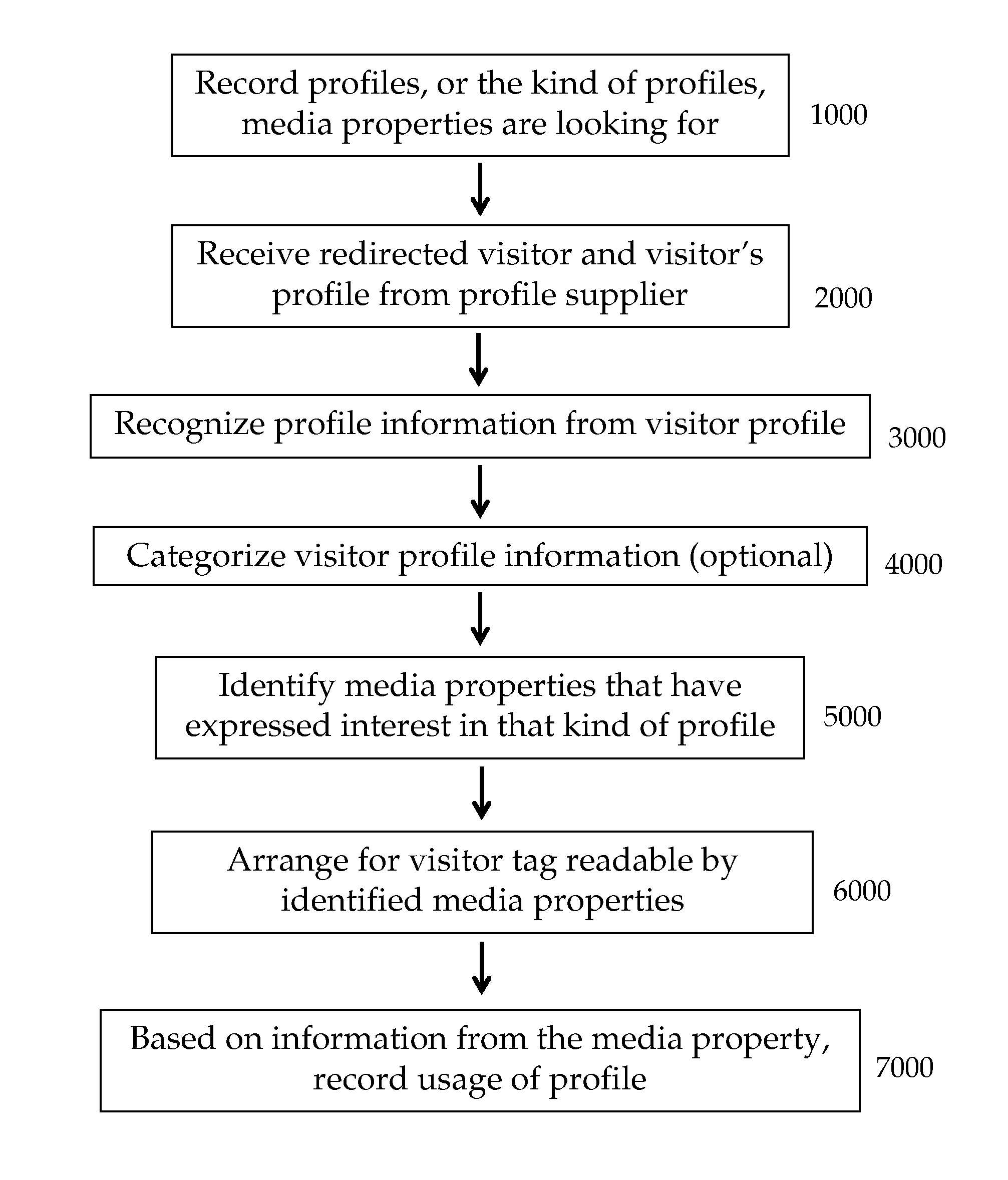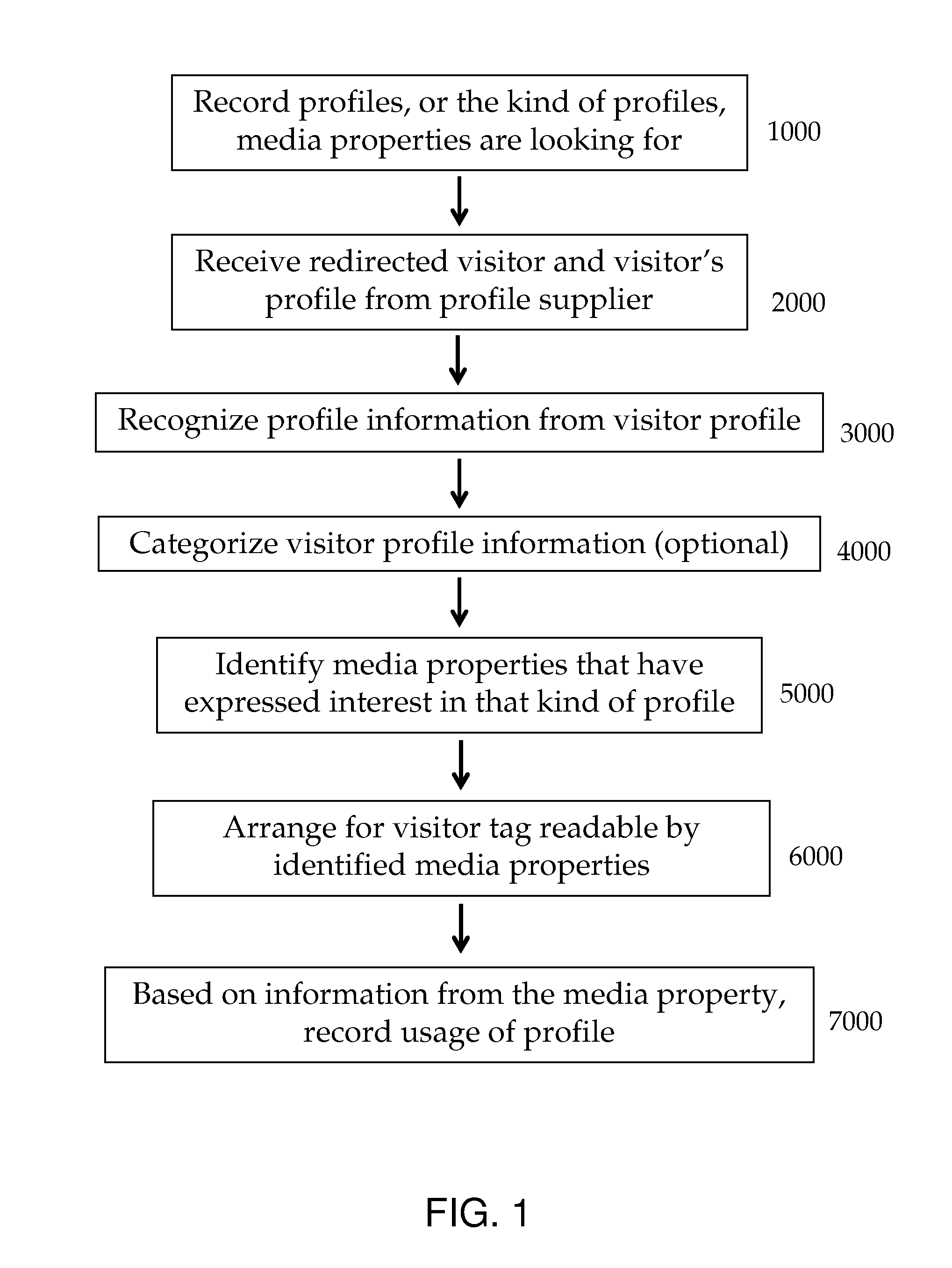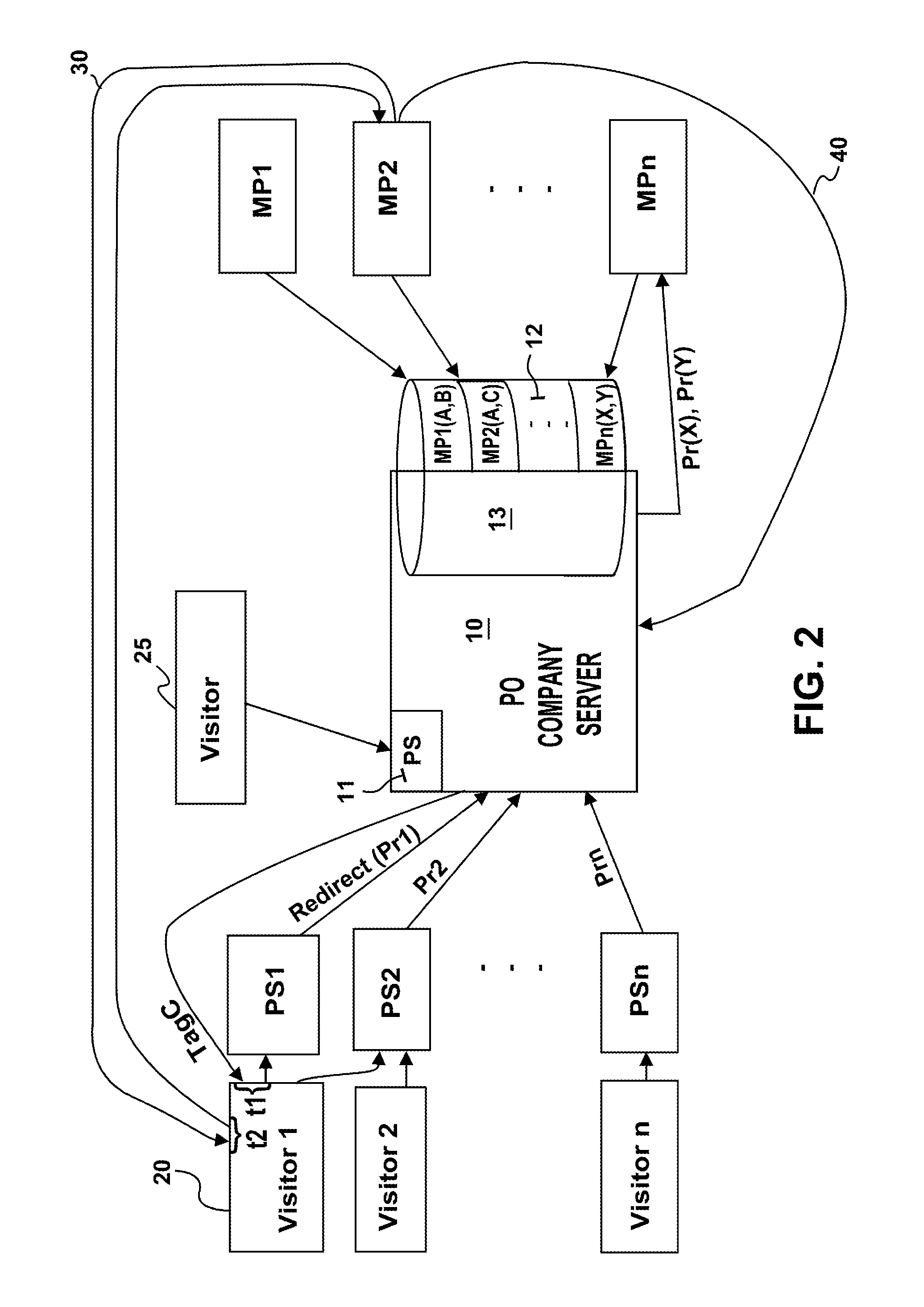Providing collected profiles to media properties having specified interests
a technology of media properties and profiles, applied in the field of profile-based behavioral targeting advertisement placement services, can solve the problems of media property wasting resources, advertisers are not willing to pay a high price for delivering an ad to visitors of such sites, and 50 to 80% of the ad space on the internet is considered difficult to monetize, so as to improve the monetization of electronic advertisement placement
- Summary
- Abstract
- Description
- Claims
- Application Information
AI Technical Summary
Benefits of technology
Problems solved by technology
Method used
Image
Examples
Embodiment Construction
[0042]In disclosed embodiments, collected profiles are made available by accepting information about desired profiles or profile categories from a media property, identifying an electronic visitor as fitting into the profile category, and arranging for that visitor to be tagged. Preferred additional aspects of disclosed embodiments include automatically electronically recording electronic visits by tagged visitors to a media property, determining which profile supplier will be credited for the recorded electronic visit, and crediting that profile supplier.
[0043]The method includes the following basic steps:
[0044]1. A PO company's database 12 records (FIG. 1, 1000) the profiles, or the kind of profiles, a media property (e.g., FIG. 2, MP1) is looking for. The profile could be a behavioral profile, a demographic profile, or any other possible profile. For example, a media property (MP1) could ask for visitors who have searched for “car insurance” on a search engine, visitors who were ...
PUM
 Login to View More
Login to View More Abstract
Description
Claims
Application Information
 Login to View More
Login to View More - R&D
- Intellectual Property
- Life Sciences
- Materials
- Tech Scout
- Unparalleled Data Quality
- Higher Quality Content
- 60% Fewer Hallucinations
Browse by: Latest US Patents, China's latest patents, Technical Efficacy Thesaurus, Application Domain, Technology Topic, Popular Technical Reports.
© 2025 PatSnap. All rights reserved.Legal|Privacy policy|Modern Slavery Act Transparency Statement|Sitemap|About US| Contact US: help@patsnap.com



